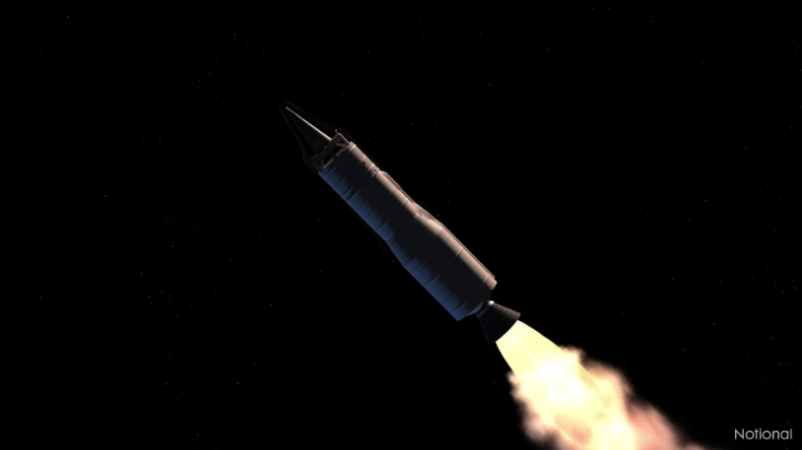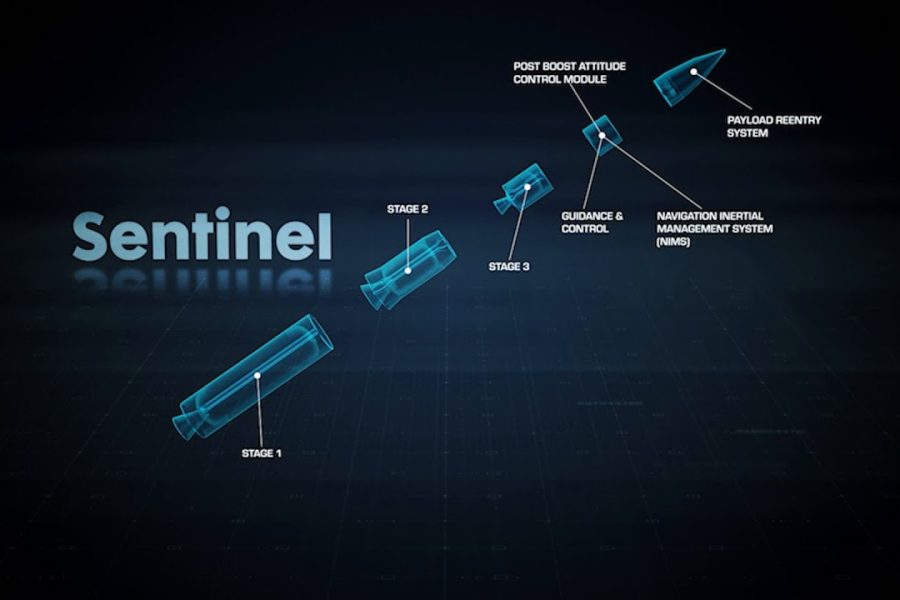NATIONAL HARBOR, Md.—The Air Force and Northrop Grumman are pouring billions of dollars toward cybersecurity and digital modeling and testing for the new Sentinel intercontinental ballistic missile, highlighting the scale and sweeping changes of ICBM modernization.
And while the program has been plagued by cost overruns and schedule delays, officials said at AFA’s Air, Space & Cyber Conference they’re starting to see the benefits of their cutting-edge approach.
The Air Force and Northrop successfully completed the second test of Sentinel’s digitally designed second stage rocket in a July 20 vacuum chamber test, validating the accuracy of Northrop’s digital modeling approach.
Northrop has invested $13.5 billion over the past five years in infrastructure and research and development for advanced manufacturing, much of it for Sentinel and the new B-21 bomber, said Ben Davies, corporate vice president and president of defense systems at Northrop.
Most of Northrop’s investment into Sentinel has gone into manufacturing and infrastructure capabilities, Davies said. The firm has added 30 million square feet of manufacturing to support solid rocket motor manufacturing and produce the subsystems required for the Sentinel.
The firm has also spent $2 billion to develop the “digital ecosystem” necessary to accurately model, analyze and evaluate “every aspect of those systems thousands and tens of thousands of times before we bend metal,” Davies said.
With Sentinel, “we’re now starting to see the models come to life, and we’ve now had the opportunity to prototype and test every stage of the missile,” Davies said. “And they very much performed as we expect them to, which gives us confidence as we push forward on the path to get that program into flight test.”
Northrop’s digital model-based system engineering approach will help the program become more efficient and lead to future cost-savings, Davies said.
“It’s a mindset shift from explicitly having to verify every requirement on a physical article. You can perform … millions of verification cases against these high fidelity models, and then you’re essentially just validating data points when you get into the test program, which is amazingly more comprehensive and more efficient,” he said.
The Sentinel program has faced its share of hurdles. In January 2024, the Air Force announced that Sentinel had “critical” costs and schedule overruns that triggered a review under theNunn-McCurdy Act, which requires the Pentagon to inform Congress if a program suffers a cost or schedule overrun of more than 15 percent. The Air Force is still restructuring the program.
“Sentinel is arguably one of the largest, most complex programs we as a nation have ever taken on,” said Davies. “It’s not just replacing the 400 on-alert missiles we have today in Minuteman, but it’s really a replacement for all of the ground infrastructure which includes nearly 500 sites across 30,000 square miles across five states.”
Beyond the sweeping scale, there is also a digital aspect of that new infrastructure that Northrop is managing.
“A unique aspect of Sentinel is that our infrastructure is very much a part of our weapon system, and so we are actively expanding the digital thread on Sentinel to include our infrastructure,” Davies said. And that means not just analyzing and optimizing how that infrastructure will perform, and it’s very important it does perform because it provides critical aspects of the performance of the weapon system.”

The Sentinel is also being designed to offer greater accuracy, improved range over the Minuteman, and the ability to defend itself against future nonkinetic threats such as cyber attacks.
Brig. Gen. William “Buck” Rogers, program executive officer for ICBMs, stressed that the Air Force has to be more responsive to threats against the land leg of the Pentagon’s nuclear triad and “that doesn’t include just head-on kinetic type threats.”
“The requirements for an ICBM fleet may look different in the future and do look different, and that’s where Sentinel comes in,” Rogers said. “That includes things like cyber, so a core part of Sentinel is actually making sure that we are cyber secure.”
Sentinel will also have the ability to be modular and “actually adjust to the threats quicker,” Rogers said. “In the future, having more control of our standards and our interfaces we will be able to better adjust and get after those new capabilities, especially when it comes to things like software and some of the other capabilities that may ride on top of the missile.”


